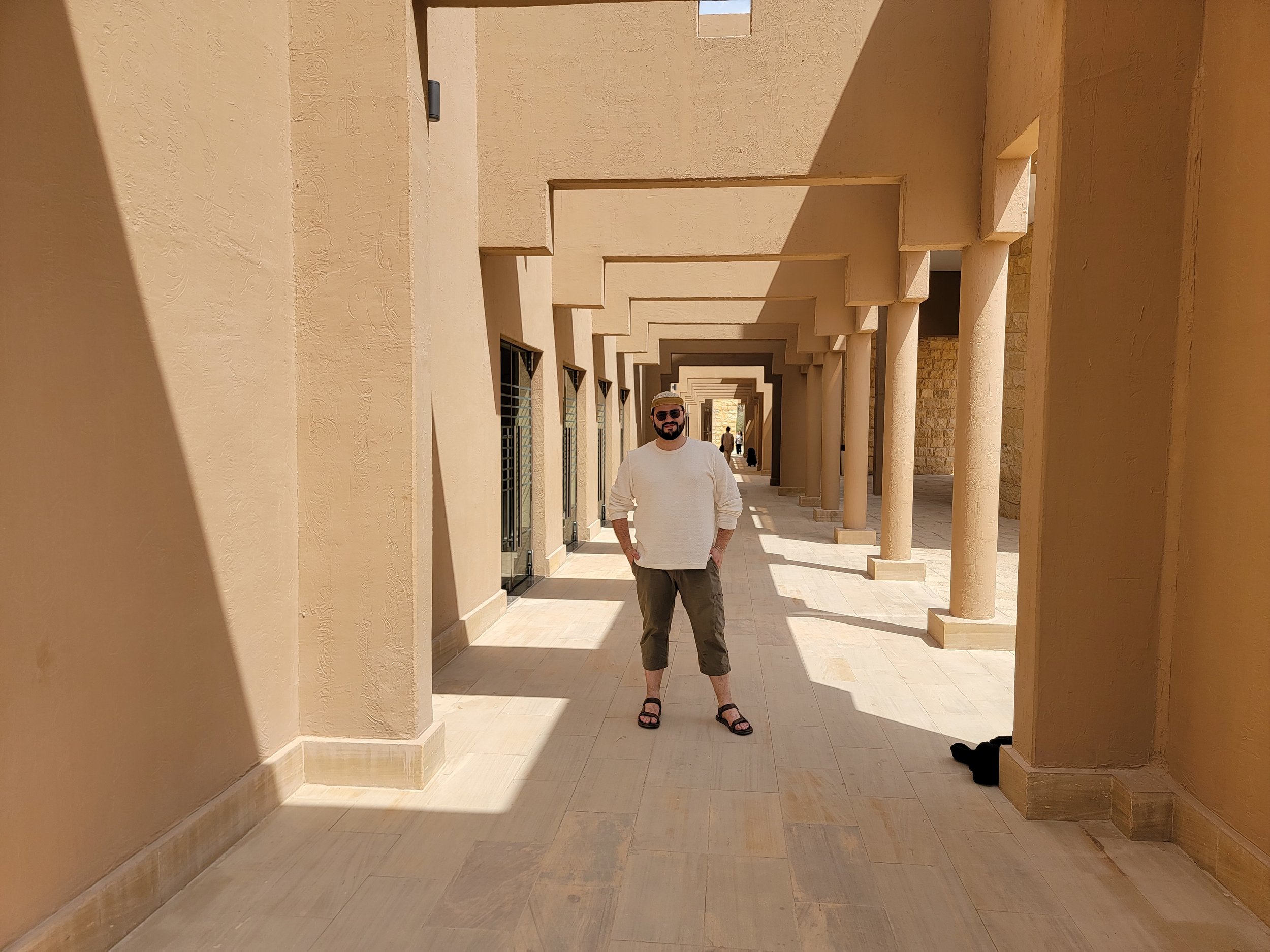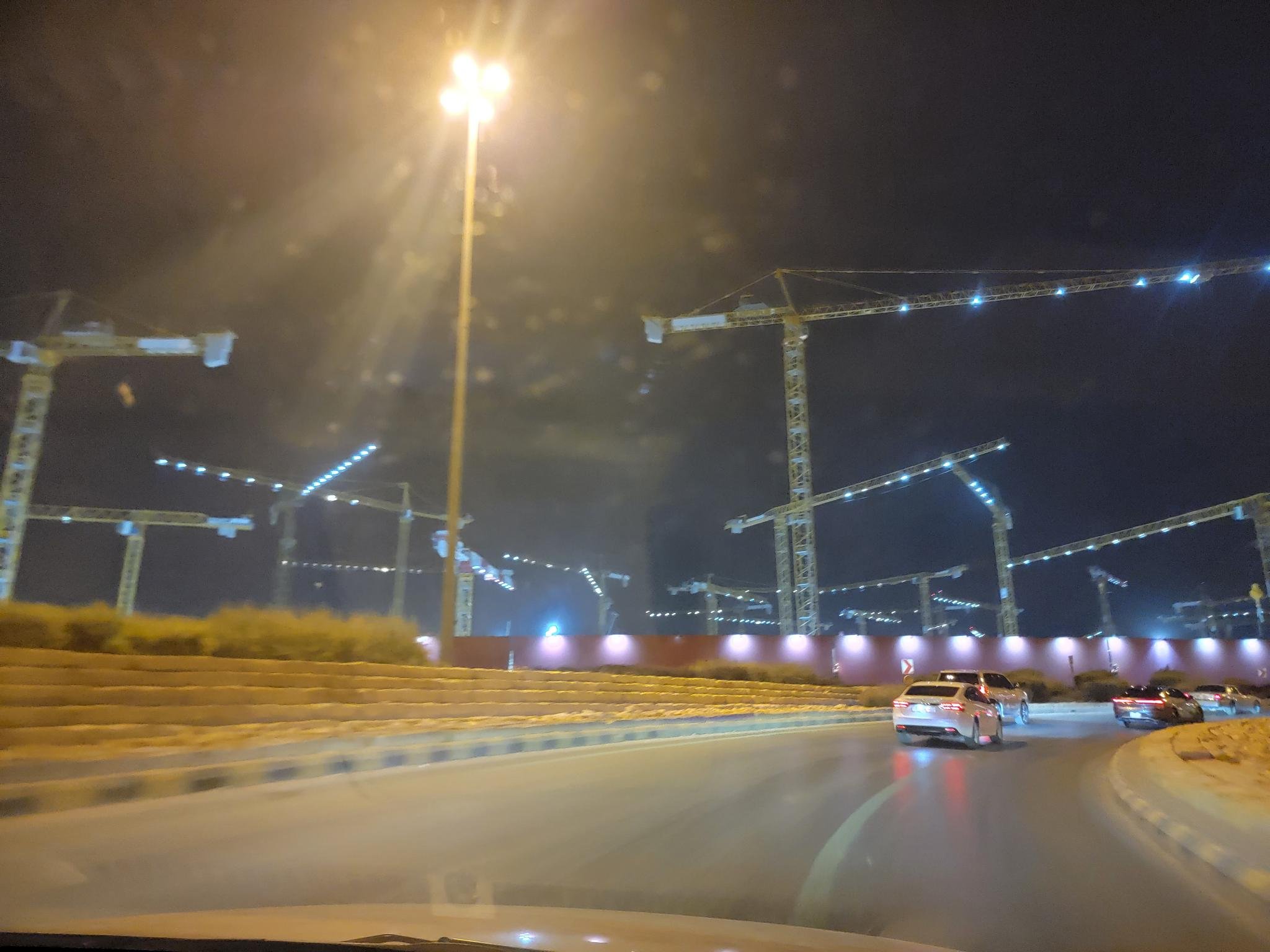Why Saudi Arabia?
I have been fortunate to see many places, and for the past few years, when people have asked me, “What is the most interesting place in the world for you right now?” my answer has consistently been the Kingdom of Saudi Arabia.
I recently had the chance to spend a week in Riyadh to attend the LEAP Conference. Ever since I read about the construction and investment into KAUST (especially their visualization lab) about 12 years ago, I became very curious to see the country for myself. In some ways, I imagined there to be the opposite of Seattle (where I have spent most of my life), and that it would be interesting to see Saudi Arabia just for that reason. When I found out that it was actually a bit challenging to get a visa to visit there, I became even more interested in going.
Fortunately, as of 2020, there are now tourist visas that make it easy to get there. As soon as the e-visa page opened, I applied for and got one! But covid made me postpone my first planned trip out there. Two years later, when I was at the Expo Dubai, the Saudi Pavillion was one of the highlights of my time there. The pavillion was one of the most well-thought out experiences. I loved how they incorporated palm trees above the underground area. The whole journey through the pavillion walked you through the story of the country and most interestingly to me, where they looked to go.
Even more interesting than the pavilion were the people inside. Everyone was incredibly well-spoken and friendly. Suddenly, we found ourselves getting travel advice from some people working in the pavilion and getting served a very tasty saffron-spiced coffee. The people we talked to asked great questions and asked us to be straightforward and candid about any prior perceptions we may have had about the country. It was an impressive experience, and we passed by a few more times during our days at Expo. I was intrigued and wanted to learn more.
A few months later, I was able to return to Dubai for the Future Food Forum. When I was there, the highlight of the exhibition hall was the Neom booth. At that time, there was little publicly available information about the project, so I asked as many questions as I could. I already have strong skepticism about media (especially when they talk to ambitious people and creators), and talking to the people at the Neom booth showed me that there were highly competent and focused people who were thinking about food systems way beyond the physical future city of Neom. Once again, I left there impressed and went searching for more information on the technical team. I saw that Joseph Bradley was leading Tonomus, and after listening to all of his talks on Youtube, I went ahead and grabbed his book (which I highly recommended). I found the book immediately applicable to what I was doing at the time, and even more curious about what could be happening out in Neom. As I was living in Turkey, observing my surroundings, and thinking about the future I wanted to create with my fiancée, I was a bit struck about the lack of an explicit long term vision in my home country, the US (like why we don’t have one of these). Seeing the talent that was getting amassed in Saudi Arabia, I wanted to learn more and see how I could get involved.
Looking Forward
I finally had my chance to visit the Kingdom for LEAP 2024. I knew it was going to be a huge event, but it is hard to explain just how big everything was. From the moment I arrived in the country, it was clear that people from around the world and country were coming together for something unique.
A picture I snapped en route to the venue
Just getting into the venue set the stage for how the next few days were to be. I was quickly checked in amidst groups from around the world. People from all sorts of industries, curious locals, and others like me who were just there to take it all in. There were a huge amount of speeches and other activities packed into the few days of the events. It was all very accessible and easy to navigate as an English speaker. I was impressed with the confidence and qualifications of the students who were there. I was just a normal attendee, and many walked up to me, introduced themselves, and asked about my career and suggestions for them. I was asked quality questions, and saw how hungry that generation was to do something impactful. These students were well prepared to think big and clearly had a sense of responsibility for the future of their country.
I had a chance to see the Tonomus booth and talk to some of the people involved with the project. They were only able to explain a limited amount of details about what the company does, but I heard enough to leave me wanting to know more. There were a few presentations throughout the conference from people involved in Tonomus and other smart city city megaprojects, and I had some great conversations with the other attendees.
I also had a chance to see Joseph Bradley give one of his energetic and thoughtful speeches. I hope this talk is uploaded online at some point.
I also found out that my good friend Ramses Alcaide was invited to present there. His company, Neurable, makes a non-invasive brain computer interface. I helped them demo their headset, which allows users to measure their focus over time. People would put on the headset and we would go through tasks that involve different levels of brain engagement - such as reading a passage, playing a video game, focusing on breathing, etc. They would graph the live signal and it was clear that the headset could pick up on the changes. I think this data source could be an important component of the “Cognitive Cities” that will be made and tested in the Kingdom, and then likely exported elsewhere.
Outside of LEAP, I got to enjoy a bit of sightseeing in the area. I was particularly interested in seeing the development of Diriyah, which is where the modern state was born. This site was once a center of study, and the people there built a society that maximized their ability to do that. Their website invites people to “Visit Diriyah, where the future is enriched by the wisdom of the past”, and that completely makes sense after seeing there in person.
There is a mix of walking spaces, eateries, shopping, museums under the shade of the date palms. I was able to catch there early in the morning and think about life as I walked around sipping saffron coffee.
I spent most of my life in areas that had only minimal human settlement just 150 years ago. Additionally, there is a huge turnover in people who come in for jobs at the big companies for a few years and then leave afterwards, so there is a large proportion of the population without any multigenerational connections here. So I have always been curious to see places with a deeper level of connection to the land and each other. I felt a bit of that when I would visit my grandfather in his small town in the Andes, but remember being especially struck when I met an Omani near Fanja who was able to describe things that his family did spanning back more than 10 generations.
Going through Diriyah and the National Museum, it was clear that the people there saw themselves within this long story. The question of “What comes next?” was present everywhere in Saudi Arabia in a way I haven’t seen elsewhere. I was one of those kids that read and thought a lot about “the future”, going through sci-fi, issues of Popular Science, and later to futurists like Ray Kurzweil.
Out in Saudi Arabia there was a clear and explicit connection between thinking about the future and the past.
This coffee shop near where I stayed was an example of one such connection.
Demography is Destiny
I am from a family of 5 kids. Historically, this is a very normal household, but now less than 1.25% of US households have 7 or more people in it. One thing that stood out immediately when I visited the Kingdom was how young the population was. According to Arab News, people under the age of 30 make up 63% of the population. That means that at the age of 34, I am older than the majority of the population! There were kids everywhere.
As someone who is planning to start having kids soon, it was nice to see many kids running around, and the large parks designed for them. It was clear to see how much they valued and planned for the future generations.
The population pyramid, sourced from PopulationPyramid.net.
The city where I grew up is continually ageing. They recently announced the closure of 20 schools because there are less and less children to attend them. This is happening all over the US, Europe, and now even in Latin America. When I worked in downtown Seattle, I saw that it was easy for people in my age cohort to lose sight of the bigger picture of humanity, since most of them were living in demographic bubbles that rarely intersected children.
For all the attention that startups in San Francisco receive, I do not think this population pyramid will build the solutions needed for the future.
There are still five and a half years before 2030, but people out there already have Vision 2030 at the front of their minds. I heard it brought up on multiple occasions with people I talked to.
Thinking big is contagious. While there is a lot of doomerism and ideas of “degrowth” being floated around my age cohort (Millennial), I can not help but be an optimist. Humans are naturally builders, and seeing people make ambitious projects nearby is an amazing feeling. Seattle has often had the most cranes in the US over the past 15 years, but Riyadh is certainly where I saw more cranes than anywhere else in my life.
I took this picture from my uber (sorry about the dusty window) and shared it with a few people to show them the scale of what is happening in Riyadh.
I grew up in a city that was built by people who were willing to go to a remote and mostly unpopulated corner of the US, and within a few generations built a few companies that have now affected almost everyone in the world (Boeing, Microsoft, Amazon, etc). I can’t help but feel that something similar is going to come out of the Gulf, especially Saudi Arabia, over the next generation.
For those who haven’t had a chance to see there in person, I highly recommend doing so to those who are curious. One thing I am certain of is that we will be hearing a lot from there over the next few years.











